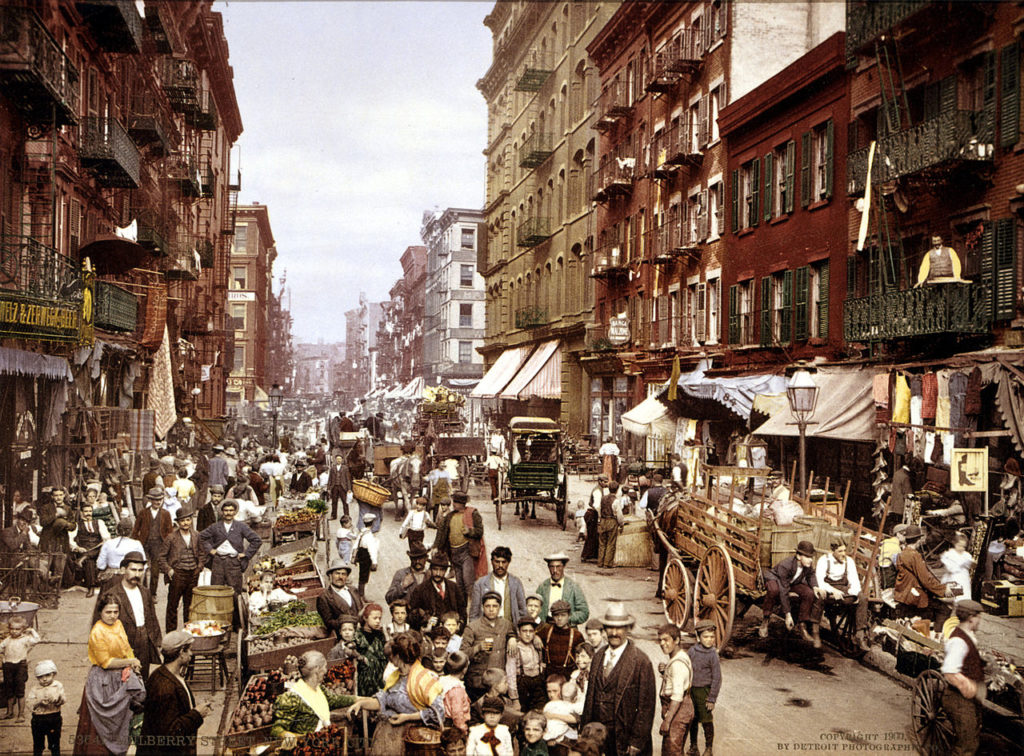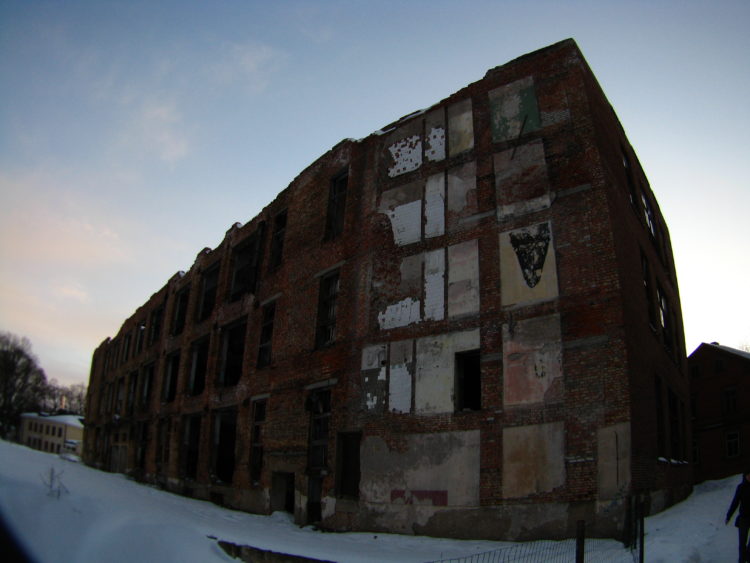For most of their history, large cities have been breeding grounds for violence, poverty, pollution, and infectious disease. But the benefits they offered to a country were said to outweigh these liabilities. Once, cities created a pool of manpower, talent, and resources that made them excellent defensive positions that could be a very hard nut to crack. In Europe, cities had elaborate defensive fortifications with moats and high walls that could withstand attack from any foe. Until the invention of gunpowder and the cannon, city walls were hard to breach.
Even without their defensive advantage large cities still provided big economic benefits. Factories located in cities could count on a concentrated workforce that could walk to work. Now, in the age of mass transit, widespread availability of personal automobiles, cell phones, and the internet, companies no longer have to locate factories in cities to attract workers. In fact, moving into the suburbs allows companies to pay their employees less because the burden of taxes and housing costs is much less outside major urban areas. We should take a moment to consider the state of modern U.S. cities. In an article for the Canadian Magazine Macleans George Perry wrote,
“Consider the cities of the United States: some of the newest, biggest, richest, most powerful on earth. I do not know a single American city which has come within a mile of meeting its downtown traffic and parking problems. This is particularly true of New York, Boston, Cincinnati, Atlanta and San Francisco. And the only really thorough way to relieve this problem would be to tear down a major portion of their business sections and start over.
San Antonio, Philadelphia and New Orleans have serious unmet sanitation problems. Their garbage collection is atrocious, and, especially in San Antonio, rats and the typhus-carrying fleas which hop off the rats and onto the citizenry sent its typhus rate soaring. Other of our cities, most particularly Pittsburgh but in winter even Salt Lake City, are filthy and near asphyxiated with their own smoke. Most of the rivers that flow through our cities are more often than not excessively polluted. Yet these same cities, which must draw on these polluted streams for water, repollute them with their own sewage a little farther down, pollution which the next lower neighbor inherits.
AdvertisementAlmost all of these cities are heavily blemished with slums — Chicago has about 50 square miles of them — which usually encompass the perimeter of a city’s business district, and breed disease, crime and misery. Few of our cities, some of them possessing famous parks, have anything like adequate recreational facilities, especially in the poorer sections.”
This gives a pretty good description of any modern city in the United States. But here’s the thing, Macleans published this piece in December… 1946. That was 74 years ago. In that time span, we have cured innumerable diseases, gone to the moon and back, harnessed the power of the atom, created self-driving cars, the worldwide web, and even phone-watches as Dick Tracy fans dreamed of having. But very little progress in improving cities seems to have occurred in the same period. This may be because in trying to lessen the chronic urban problems of crime, pollution, disease, poverty, and parking space, cities are expanded or new ones created. This then causes these problems to exponentially multiply again. So there is this cycle of city decay, followed by renewal. In 1940, New York City had a population of 7.4 million with the problems described above. Now the population is 8.2 million with the same problems described above.
Nothing appears to have changed but the number of people affected by these problems.

Poverty
In cities, the poverty rate is more than double that of the suburbs. According to a 2000 Harvard study, “[…], 19.9 percent of the population in the central cities of MSAs [Metropolitan Statistical Areas] lived in poverty, compared with just 7.5 percent of the population in suburbs.”
Why do the poor flock to cities, especially in periods of economic downturn? A reason is that the urban public transportation and density of businesses means they don’t have to commute far to find work. According to the Brookings Institute, between 2000 and 2015 people living below the poverty line increased by 57 percent. In response, local governments increase taxes to provide welfare services. In turn, this causes the people paying these taxes to move to the suburbs. This shrinks the tax base and reduced welfare services which leads to increases in crime.
Crime
Why do large cities have such persistent crime problems? Many years ago a reporter asked bank robber Willy Sutton why he robbed banks. Sutton replied, “That’s where the money is at.”
Crime is more lucrative in large cities because of the higher concentration of wealth in a small area and denser population. Criminals can also blend in with the larger population on the street, resulting in a lower probability of arrest. Additionally, studies find that about one third and one half of the crime in big cities is tied to the prevalence of female-headed households among the poor.
Pollution
Pollution is a by-product of human productivity. Modern industry produces air and water pollution comparable to its output level. Humans create mounds of trash and solid waste that has to be processed and disposed of. The larger the city, the larger the problem. And if there are accidents or strikes the problems of dealing with garbage and human waste can shut down a city.
Disease and Contagion
Before the innovations of antibiotics and vaccinations, our great grandparents living in the big city would go to the countryside in the summer. We tend to think of that as quaint summer excursions. But they were actually fleeing outbreaks of deadly diseases, like cholera, yellow fever, and polio, that would spike in warm weather. Modern medicine has turned this on its head. Additionally, people now have winter homes in warm states that have airconditioning and mosquito control.
But we should have known that the underlining accelerators of urban disease spread still exists. It was only a matter of time before something like COVID-19 would start in a major city, spread to other cities, rural areas, and the world at large. The Black Plague, which killed one-third of the population of Europe in the Late Middle Ages, was a bacterium that spread through flea-carrying rats. The prevalence of animal and human cohabitation in medieval European cities facilitated the spread. Living in the house in many homes in London and Paris were sheep, goats, and pigs. Before you laugh and think that this isn’t happening today, look at your dog or cat sleeping on your bed. They carry fleas too that can transmit dangerous zoonotic viruses. And COVID-19 broke out in Wuhan, China, a city of some seven million people.

And that brings us to the current outbreak. Data from the CDC finds that 80 percent of the first 100,000 COVID-19 deaths were in large metro areas. From these large metro areas, the deaths then spread to the suburbs and rural areas. As we get into the 300,000 death range, cities still account for the majority of deaths. Yet, now the suburbs and rural areas account for nearly half. And like our great grandparents two generations ago, people are fleeing high COVID infection and mortality rates in the cities and headed to the countryside. Yet, the number of people making this move now is hard to assess.
Many factors encourage this migration. One’s economic ability to relocate and the availability of jobs in the intended location are two main factors: The rich and those with job security can relocate easier than those without.
Unlike the instant mass migration out of a city caused by a massive fire or earthquake, we may see that this migration will spike after COVID has come under control and will be comprised of people who want to avoid a future pandemic.
It might be time for society to rethink large cities and whether they are liabilities or beneficial to post-Industrial Age countries like ours. As always, give us your thoughtful comments below.
Are large cities obsolete in the Information Age of 5G-capable telecommuting and personal automobiles?
Are the problems of poverty, crime, pollution, and contagion solvable or do we just create bigger cities with more of the same problems in an effort to solve them?










COMMENTS
You must become a subscriber or login to view or post comments on this article.